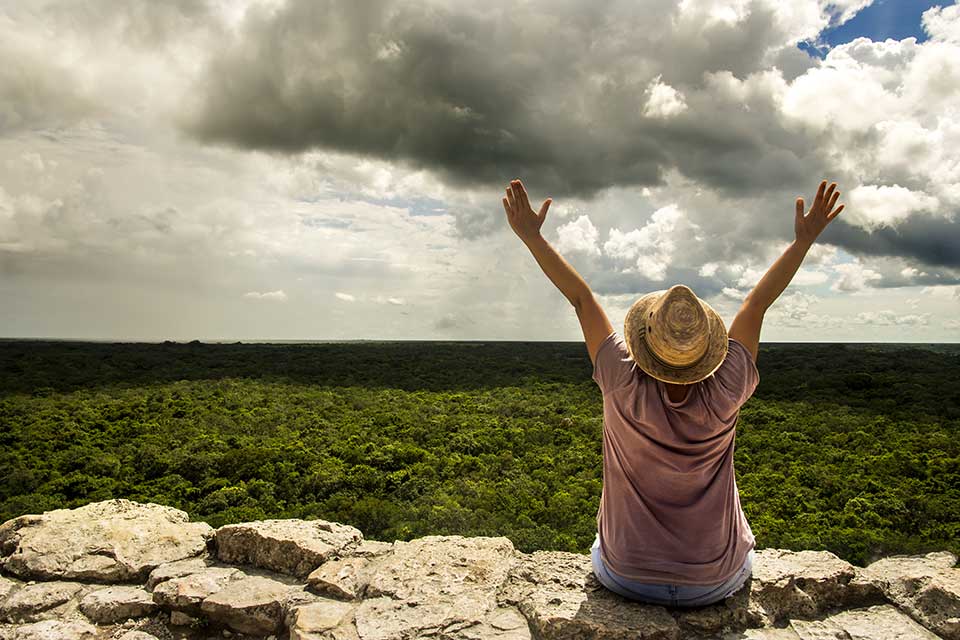The Yucatan Peninsula of Mexico is a truly paradise. Full of ancient Mayan wonders hidden into the jungle, waits for your visit and offers a wide variety of activities that combine adventure, culture and fun to discover the richness of the Mayan Culture in a just few kilometers of Cancun City.
These are the top Mayan ruins that you must to explore in your next vacations to the city:
Chichén Itzá
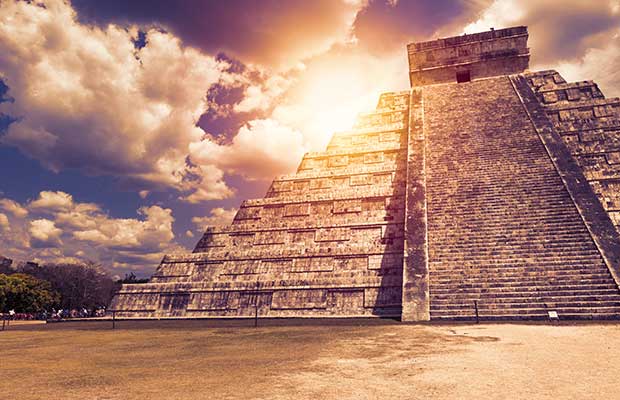
Chichén Itzá is located in Yucatan. This old city is the most important archeological zone of the Riviera Maya. In 2007 was declared by the UNESCO as one of the 7 Wonder of The Modern World and in Mayan language means Boca del Pozo de los Itzaes. To get there you can hire a tour in any of our resorts in the Caribbean or take a rental car.
The Pre Hispanic city is one of the most important touristic spot destination and every year gets around a million of visitors from all over the world. We are sure that you recognize the beautiful Kukulcan Pyramid, known as El Castillo. This temple has become the iconic emblem of the Maya culture.
Discover this city will marvel you. In there you can appreciate the heritage of the Mayan Culture. If you prefer travel by yourself this information will help you:
- Hours: Monday to Sunday from 08:00 to 17:00 hours. (Closing of ticket offices and accesses at 4:00 p.m., closing of remote accesses to the interior of the site 16:30).
- Tickets: 15USD. The use of a tourist video camera generates an additional payment of rights of 5USD aprox.
Tulum
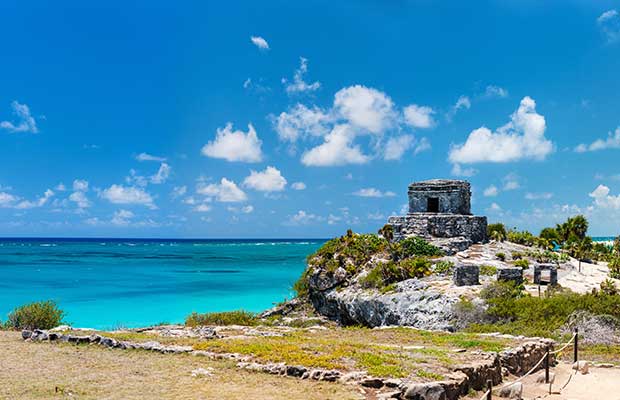
This place is located just at the entrance of this beautiful town which in recent years has become the eco-chic destination of Mexico, Tulum. The ticket to visit these ruins costs around 10USD and you can hire an official guide in case you want to listen the ancestral history of this magical place, people who know said that the original name was Zama which means dawn but after many years the name was changed to Tulum that means wall and it agrees with the place since the buildings that you will find there form a perfect wall very well conserved during all these years.
The most impressive building is called El Castillo and it is located right on the seafront at the edge of that huge Cliff that we see in every photo. You should know that the use of the drone is not allowed and to record it is necessary to pay a permit at the entrance (3USD aprox). We recommend you wearing a hat because parts of shade are very few and do not forget to wear your swimsuit since you can go down to the beach if the waves are gently.
- Tiquets: 10USD / Photo Access: 3USD.
- Monday to Sunday from 08:00 to 17:00 hours (last access at 16:30 hrs.).
- Open every day of the year.
- Recommendations: Wear cool and comfortable clothes, as well as low shoes, sunscreen and water. It is possible to access with swimsuit and towel to swim on the beach, but access to food or large packages is not allowed.
Cobá
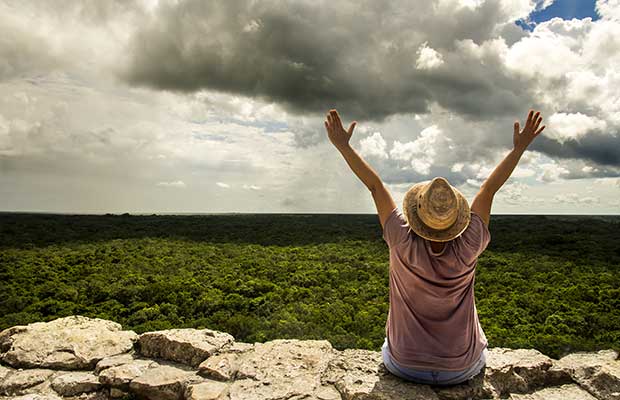
This the pre-Columbian Mayan ruins originally name of Co-Bah, and means abundant water everyehere and is located about 100 kilometers from Playa del Carmen and about 40 from Tulum.
This impressive archeological zone is covered in two ways: walking, appreciating each complex or cycling. Only 20% of the city is discovered, the rest remains buried in the jungle, but even with that, what you will appreciate is really magnificent. In perfect condition are the foundations of the imperial halls, some ceremonial pyramids and the most impressive: the ball game and of course, the 42-meter-high Nohoch-Mul pyramid (it is 12 meters taller than Chichén Itzá) . The challenge is to climb the pyramid to the top and appreciate from there, the beautiful and colossal Mayan biosphere.
- Wear water, hat, sunglasses, sunscreen, good shoes and mosquito repellent.
- Hours: Monday to Sunday from 08:00 a.m. to 5:00 p.m. (last access at 4:30 p.m.).
- Tiquets: 15USD and you will have to add another 5USD if you want to record the installations.
Muyil
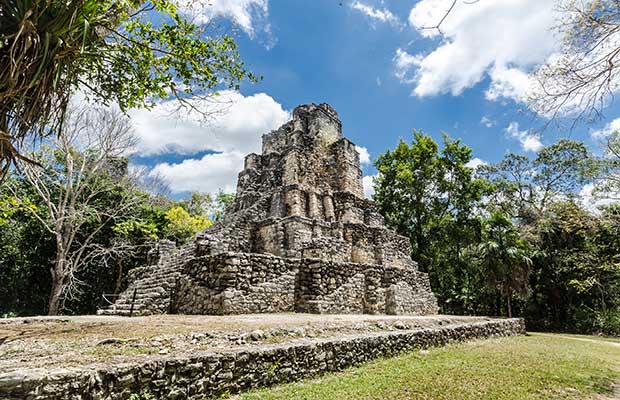
The original name of the site is unknown. Muyil is the name that has been known since the Colonial era, one of the lagoons adjacent to the site. It is also known as Chunyaxché.
It is a settlement that by its geographical position maintained a long occupational continuity. The first material evidence corresponds to the Late Preclassic (300 – 50 BC), when it would have had links with settlements in northern Belize and southern Quintana Roo, a relationship that breaks towards the Late Classic, when its relationship with the interior of the Yucatan Peninsula and has significant population growth, which is related to the construction of some of the buildings that are currently preserved.
For the Early Classic (250 – 600 AD), Muyil was already an important city in which important Petén-style buildings were built, such as El Castillo and the three foundations of the Entrance Group. Because of its strategic location, towards the early Post-classic (1000 – 1200 A.D.), it maintained some contacts, with Chichén Itzá first, and with Mayapán later. In the late Post-classic period (1200 – 1450 A.D.), most of the known buildings were built, and when the city became very important when inserted into the coastal commercial networks of the Peninsula.
- Monday to Sunday from 08:00 a.m. to 5:00 p.m. (last access at 4:30 p.m.)
- Tickets: 15USD
- Wear water, hat, sunglasses, sunscreen, good shoes and mosquito repellent.
Ek Balam
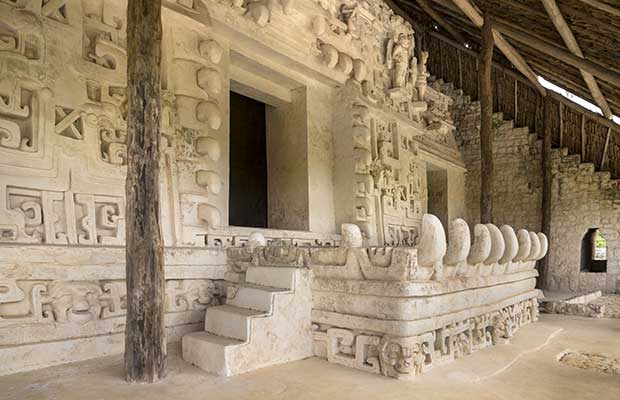
Ek Balam in Mayan language means black jaguar or celestial jaguar. However, some Maya speakers in the region also translate as “bright star-jaguar.”
It was a capital with great wealth, with a population of 12 to 18 thousand inhabitants in its main nucleus. The complex was founded by the leader Ek ‘Balam or Coch Cal Balam, who arrived from the East and ruled the first 40 years. Many masks, friezes and stone statues have been found with allusions to the jaguar and great characters of the city, mainly effigies of its rulers, which shows us that it was a city that was outside the cult of Kukulkan.
The main site has been called the Acropolis which is a very fortified elevation, and with its 160 meters long by almost 70 wide and 31 high, it is listed among the largest buildings in the area. It has infrastructure to practice rappel and zip line, with rental service for bicycles, kayaks, cabins, dining room and rest areas.
- Monday through Sunday from 08:00 to 17:00 hours.
- Tickets: 20USD
- Wear water, hat, sunglasses, sunscreen, good shoes and mosquito repellent.
San Gervasio Archaeological Site
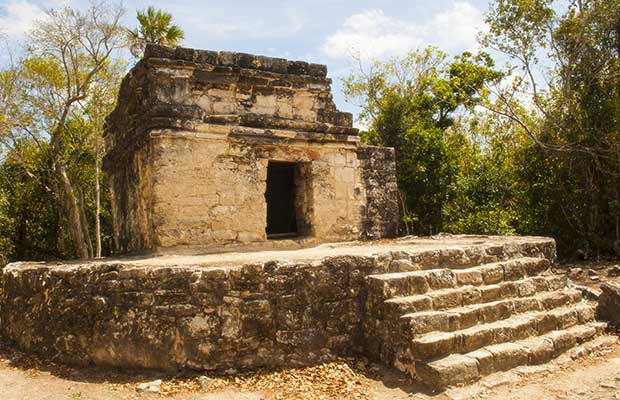
Located in the beautiful island of Cozumel, at the San Gervasio Ranch, this ancient Mayan settlement is one of the most important in the region. Took his name in the last century from the saint and remains till now as one of the non-sacred Mayan centers. San Gervasio was a strategic site for trade and political development in the area.
That is why this site is very interesting to visit because all the architectural groups were linked by a network called Sac-Be, or white roads.
You cannot miss these ruins that very few know. Take the ferry to Cozumel Island, just 55 km from our Catalonia Riviera Maya and Catalonia Playa Maroma resorts, and live the adventure of traveling to the past!
We talked in this article about Mayan ruins near Cancún but… what about those being around Riviera Maya? Discover more ancient buildings in our article about Mayan ruins in Riviera Maya.
Consider all these wonderful places on your next visit to Mexico and discover the majestic splendor of the Mayan past, today proudly cultural heritage for the world.


